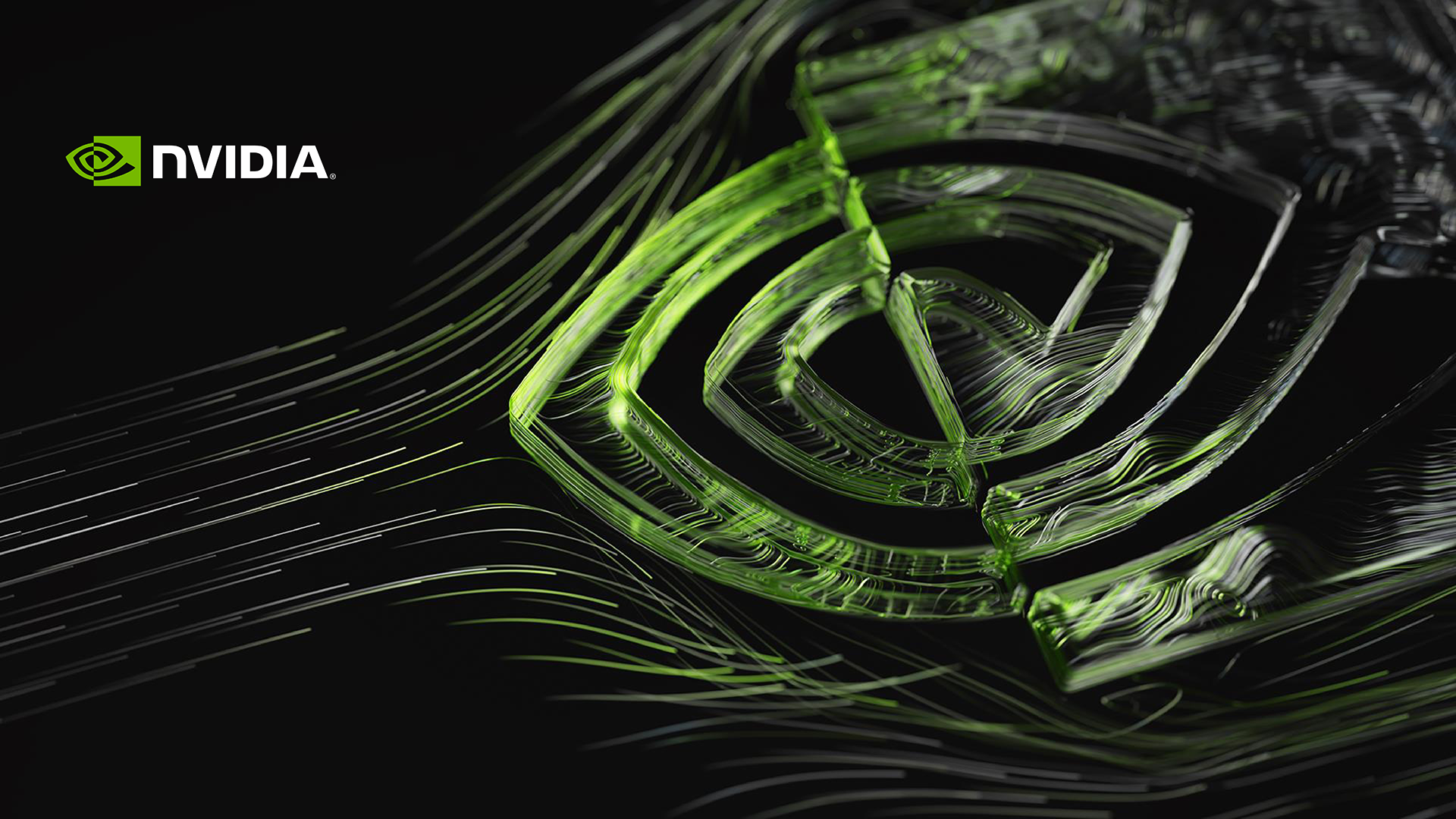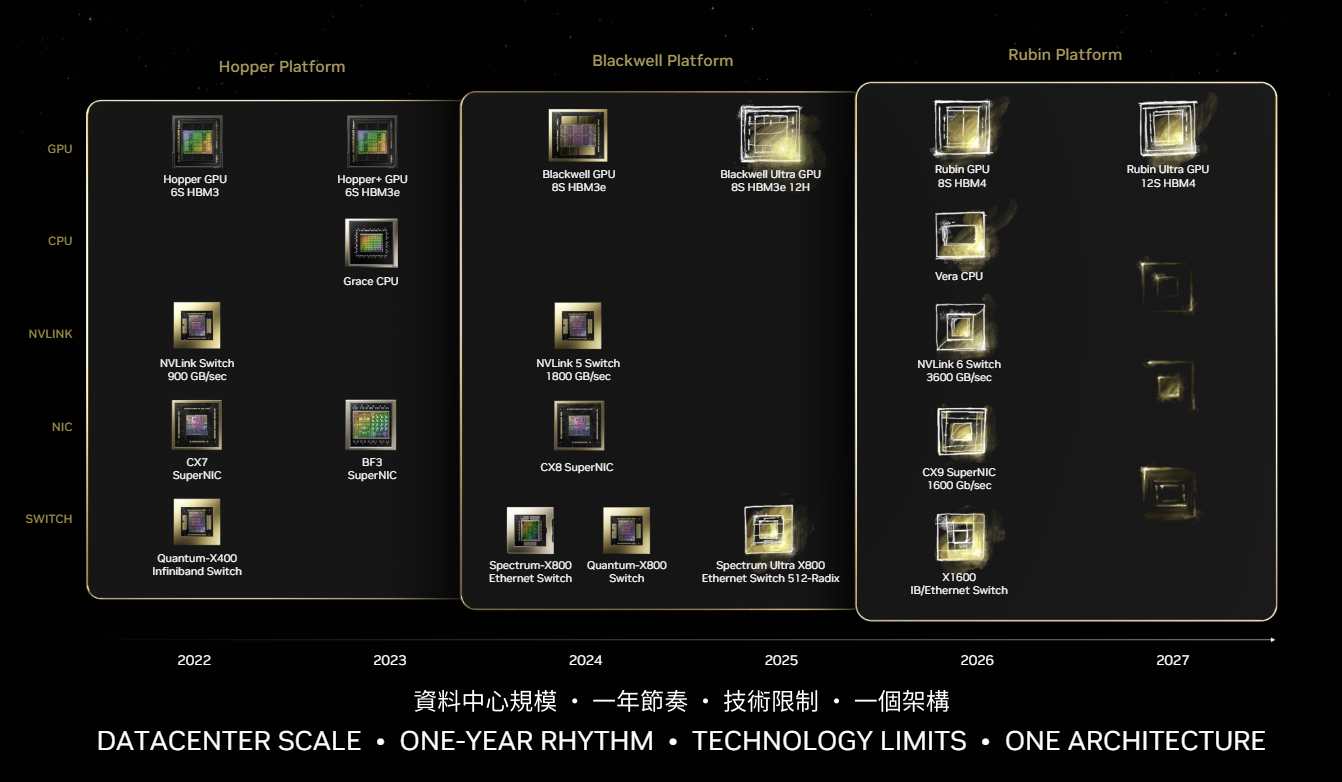Nvidia confirms Blackwell Ultra and Vera Rubin GPUs are on track for 2025 and 2026 — post-Rubin GPUs in the works

A design flaw delayed Nvidia's rollout of Blackwell GPUs for data centers last year, prompting the company to redesign the silicon and packaging. However, this did not affect Nvidia's work on mid-cycle refresh Blackwell 300-series (Blackwell Ultra) GPUs for AI and HPC and next-generation Vera Rubin GPUs. Nvidia can already share some details about Rubin GPUs and its post-Rubin products.
"Blackwell Ultra is [due in the] second half," Jensen Huang, chief executive of Nvidia, reaffirmed analysts and investors at the company's earnings conference call. "The next train [is] Blackwell Ultra with new networking, new [12-Hi HBM3E] memory, and, of course, new processors. […] We have already revealed and have been working very closely with all of our partners on the click after that. The click after that is called Vera Rubin and all of our partners are getting up to speed on the transition to that. […] [With Rubin GPUs] we are going to provide a big, big, huge step up."
Later this year, Nvidia plans to release its Blackwell B300-series solutions for AI and HPC (previously known as Blackwell Ultra) that will offer higher compute performance as well as eight stacks of 12-Hi HBM4E memory, thus providing up to 288GB of memory onboard. Unofficial information indicates that performance uplift enabled by Nvidia's B300-series will be around 50% compared to the comparable B200-series products, though the company has yet to confirm this.
To further improve performance, B300 will be offered with Nvidia's Mellanox Spectrum Ultra X800 Ethernet switch, which has a radix of 512 and can support up to 512 ports. Nvidia is also expected to provide additional system design freedom to its partner with its B300-series data center GPUs.
Nvidia's next-generation GPU series will be based on the company's all-new, codenamed Rubin architecture, further improving AI compute capabilities as industry leaders march towards achieving artificial general intelligence (AGI). In 2026, the first iteration of Rubin GPUs for data centers will come with eight stacks of HBM4E memory (up to 288GB). The Rubin platform will also include a Vera CPU, NVLink 6 switches at 3600 GB/s, CX9 network cards supporting 1,600 Gb/s, and X1600 switches.
Jensen Huang plans to talk about Rubin at the upcoming GPU Technology Conference (GTC) in March, though it remains to be seen what he plans to discuss. Surprisingly, Nvidia also intends to talk about post-Rubin products at the GTC. From what Jensen Huang announced this week, it is unclear whether the company plans to reveal details of Rubin Ultra GPUs or its GPU architecture that will come after the Rubin family.
Speaking of Rubin Ultra, this could indeed be quite a breakthrough product. It is projected to come with 12 stacks of HBM4E in 2027 once Nvidia learns how to efficiently use 5.5-reticle-size CoWoS interposers and 100mm × 100mm substrates made by TSMC.
Get Tom's Hardware's best news and in-depth reviews, straight to your inbox.
"Come to GTC and I will [tell you about] Blackwell Ultra," said Huang. "There are Rubin, and then [we will] show you what is one click after that. Really, really exciting new product."

Anton Shilov is a contributing writer at Tom’s Hardware. Over the past couple of decades, he has covered everything from CPUs and GPUs to supercomputers and from modern process technologies and latest fab tools to high-tech industry trends.
